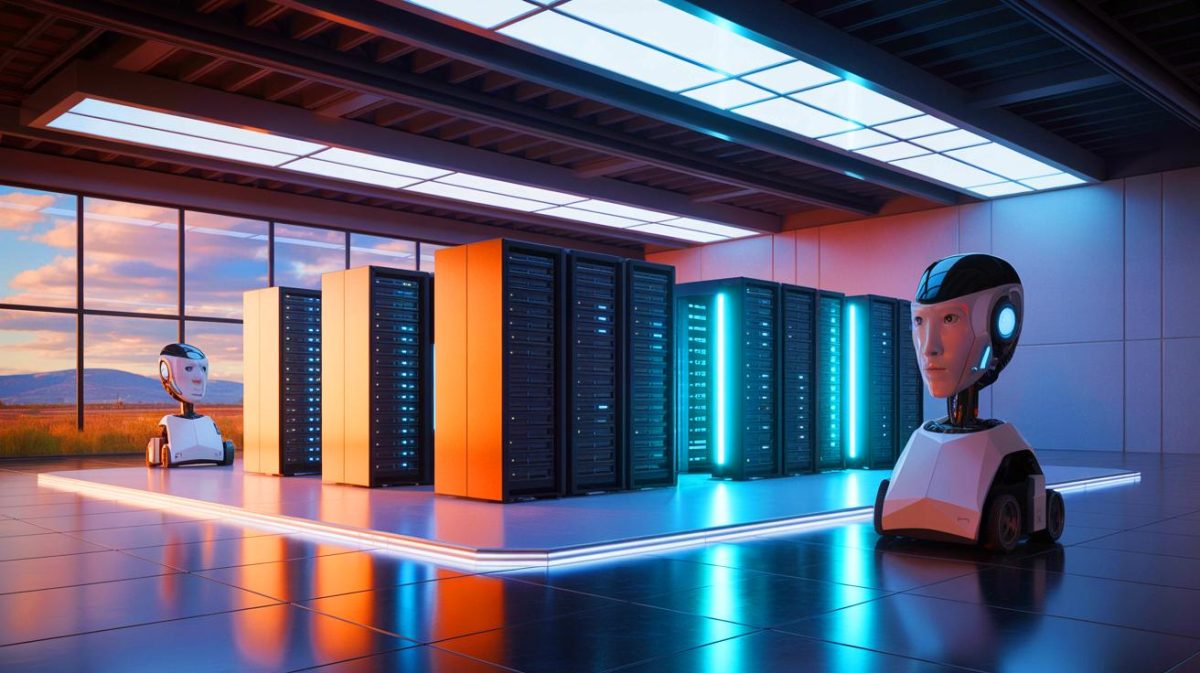| IN A NUTSHELL |
|
Elon Musk’s Tesla is on the brink of another technological revolution with the upcoming launch of Cortex 2.0, a new supercomputer cluster set to transform the company’s capabilities. Located in Giga Texas, this facility is expected to significantly enhance Tesla’s AI infrastructure, supporting both the Optimus humanoid robot program and the full self-driving (FSD) initiative for electric vehicles (EVs). As Tesla prepares to introduce its robotaxi service in Austin, Texas, the Cortex 2.0 facility will play a critical role in realizing these ambitious projects. The excitement surrounding this development is palpable, as it promises to push the boundaries of AI and EV technology.
The New Supercomputer Facility in Giga Texas
The construction of Cortex 2.0 in Giga Texas marks a pivotal moment for Tesla, as it expands its supercomputing capabilities. Strategically positioned on the north side of the existing facility, this new addition signifies Tesla’s commitment to cutting-edge technology. The site, initially planned as a support facility, has been repurposed for the supercomputer cluster, highlighting the importance of this project.
According to reports, the Cortex 2.0 facility is set to become operational by late 2025 or early 2026, with expansion efforts continuing throughout the year. This ambitious timeline underscores Tesla’s determination to stay ahead in the technology race. Although specific details about the number of graphics processing units (GPUs) remain undisclosed, expectations are high for an even larger setup than its predecessor, Cortex 1.0.
Elon Musk’s intelligence startup, xAI, recently demonstrated the potential of supercomputing with its Colossus project, which operates 200,000 Nvidia GPUs. This achievement hints at the scale and ambition of Cortex 2.0, suggesting it could surpass previous benchmarks and redefine Tesla’s AI capabilities.
Tesla’s Cortex 1.0 Supercluster
Cortex 1.0, Tesla’s first supercomputer cluster, has already set impressive standards in AI training. Unveiled in 2024, this facility in Austin, Texas, is home to a massive array of Nvidia H100 GPUs, designed to solve complex real-world AI challenges. Tesla’s CEO, Elon Musk, shared a glimpse of this technological marvel, showcasing rows of servers dedicated to AI advancement.
The initial deployment included 50,000 Nvidia H100 GPUs, with plans to scale up to 350,000. This demonstrates Tesla’s commitment to continuous improvement and innovation. The Cortex 1.0 facility required an extension to Giga Texas’ main building, emphasizing its significance in Tesla’s technological ecosystem.
By leveraging such powerful computing resources, Tesla aims to accelerate its AI initiatives, paving the way for breakthroughs in full self-driving and autonomous technologies. Cortex 1.0 has laid a strong foundation for the future, and Cortex 2.0 promises to amplify these efforts exponentially.
The Impact on Tesla’s Robotaxi Service
As Tesla gears up to launch its robotaxi service in Austin, Texas, the role of Cortex 2.0 becomes even more crucial. This advanced supercomputer cluster will provide the computational power needed to enhance the full self-driving capabilities, ensuring a safe and efficient autonomous driving experience.
The robotaxi service represents a significant step forward in Tesla’s mission to revolutionize transportation. By leveraging AI and advanced computing, Tesla aims to create a seamless and reliable autonomous driving ecosystem. Cortex 2.0 will be instrumental in processing vast amounts of data, allowing Tesla’s vehicles to navigate complex urban environments with precision.
The success of the robotaxi service hinges on the continuous development of AI technologies, and Cortex 2.0 is poised to play a pivotal role in this endeavor. By pushing the boundaries of what’s possible, Tesla is set to redefine the future of urban mobility.
Looking Toward the Future of AI and EVs
With the introduction of Cortex 2.0, Tesla is poised to lead the charge in AI and electric vehicle innovation. This new supercomputer facility will support the Optimus humanoid robot program, unlocking new possibilities for robotics and automation. By harnessing the power of AI, Tesla aims to create a new era of intelligent machines capable of performing a wide range of tasks.
Moreover, the advancements in AI and computing will have a profound impact on Tesla’s electric vehicles. The enhanced full self-driving capabilities will not only improve safety but also revolutionize the way people interact with their cars. Tesla’s commitment to innovation and sustainability is evident in its pursuit of groundbreaking technologies.
As Cortex 2.0 takes shape, the possibilities are limitless. Tesla’s vision for the future is driven by a passion for pushing boundaries and redefining the status quo. How will these advancements shape the future of AI and transportation, and what new horizons will Tesla explore next?
Did you like it? 4.5/5 (28)









Wow, Cortex 2.0 sounds like a game changer! Can’t wait to see what Tesla accomplishes with this new tech. 🚀
I wonder how this will impact the job market with more automation in the future. 🤔
Isn’t it a bit scary to have AI controlling so much? Hope they have good safety measures in place. 😬
J’admire vraiment Tesla pour repousser les limites de la technologie. Bravo! 🎉
So, when do we get flying cars? 😜
Avec Cortex 2.0, est-ce que les voitures Tesla seront enfin vraiment autonomes ?
Can’t believe how fast technology is advancing. Tesla is really leading the charge!
Do you think Cortex 2.0 will be able to handle the complexities of real-world driving?
Je suis sceptique… Ça semble trop beau pour être vrai. 🤨